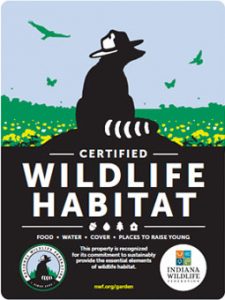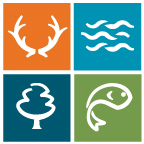-
 Tax Day, April 15, is also a good harbinger of ruby-throated hummingbird migration in Indiana! While warmer than normal temps and early blooms have spurred these magical creatures along more quickly than normal, now is the time to put out your feeders! These tiny migratory jewels feast on nectar, and you can supplement them with specially designed feeders and native plantings! To make hummingbird nectar mix 1 part granulated white sugar with 4 parts filtered water. Bring the solution to a simmer for one minute, cool and you have home-made hummingbird nectar! Don’t forget to change this solution and clean your feeders every three days to make sure you keep our feathered friends healthy throughout their breeding season! Cheers to migration and magical birds! @amosbutleraudubonsociety @indianaaudubon #nodye #nativeplants #migration #jewels
Tax Day, April 15, is also a good harbinger of ruby-throated hummingbird migration in Indiana! While warmer than normal temps and early blooms have spurred these magical creatures along more quickly than normal, now is the time to put out your feeders! These tiny migratory jewels feast on nectar, and you can supplement them with specially designed feeders and native plantings! To make hummingbird nectar mix 1 part granulated white sugar with 4 parts filtered water. Bring the solution to a simmer for one minute, cool and you have home-made hummingbird nectar! Don’t forget to change this solution and clean your feeders every three days to make sure you keep our feathered friends healthy throughout their breeding season! Cheers to migration and magical birds! @amosbutleraudubonsociety @indianaaudubon #nodye #nativeplants #migration #jewels
Sample Page
 This is an example page. It’s different from a blog post because it will stay in one place and will show up in your site navigation (in most themes). Most people start with an About page that introduces them to potential site visitors. It might say something like this:
This is an example page. It’s different from a blog post because it will stay in one place and will show up in your site navigation (in most themes). Most people start with an About page that introduces them to potential site visitors. It might say something like this:
As a new WordPress user, you should go to your dashboard to delete this page and create new pages for your content. Have fun!
Start Your Certification NowWith some simple changes, you can convert your backyard from a normal backyard with just a grass lawn, to a wildlife habitat with butterflies, birds, frogs, fish and more! You and your family will have fun creating your wildlife habitat together, and then you'll spend countless years marveling and learning about the wide variety of wildlife that visits your very own backyard. By creating a Certified Wildlife Habitat™, you also contribute valuable information about plant and animal species in your community.
The main criteria for a certified habitat revolve around providing food, water, shelter, and places to raise young. Our website also provides information and resources useful for creating a successful habitat, and our staff is eager to help you welcome wildlife to your backyard! Email us or call us at (317) 875-9453 for advice and suggestions!
Button LinkSample Page
 This is an example page. It’s different from a blog post because it will stay in one place and will show up in your site navigation (in most themes). Most people start with an About page that introduces them to potential site visitors. It might say something like this:
This is an example page. It’s different from a blog post because it will stay in one place and will show up in your site navigation (in most themes). Most people start with an About page that introduces them to potential site visitors. It might say something like this:
As a new WordPress user, you should go to your dashboard to delete this page and create new pages for your content. Have fun!
Are you interested in expanding Wildlife Certification to your community, school, or place of worship?
Wildlife Friendly Neighborhood: Are you and your neighbors interested in upgrading your neighborhood to be wildlife friendly? This program combines the guidelines to creating Backyard Wildlife Habitat with additional wildlife enhancement areas, such as neighborhood ponds and common areas.
Schoolyard Wildlife Habitat: What better way to encourage children to explore nature than through a wildlife habitat right outside their classroom? Parents, teachers, students, and community members can come together to help develop and maintain an outdoor classroom that benefits children and wildlife.
Place of Worship Habitat: Transform the land around your place of worship into an inspiring model for enhancing wildlife habitat and promoting spirituality.

